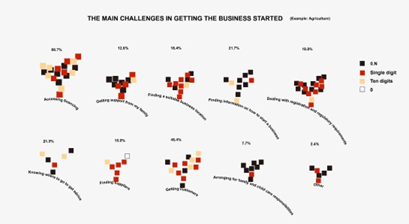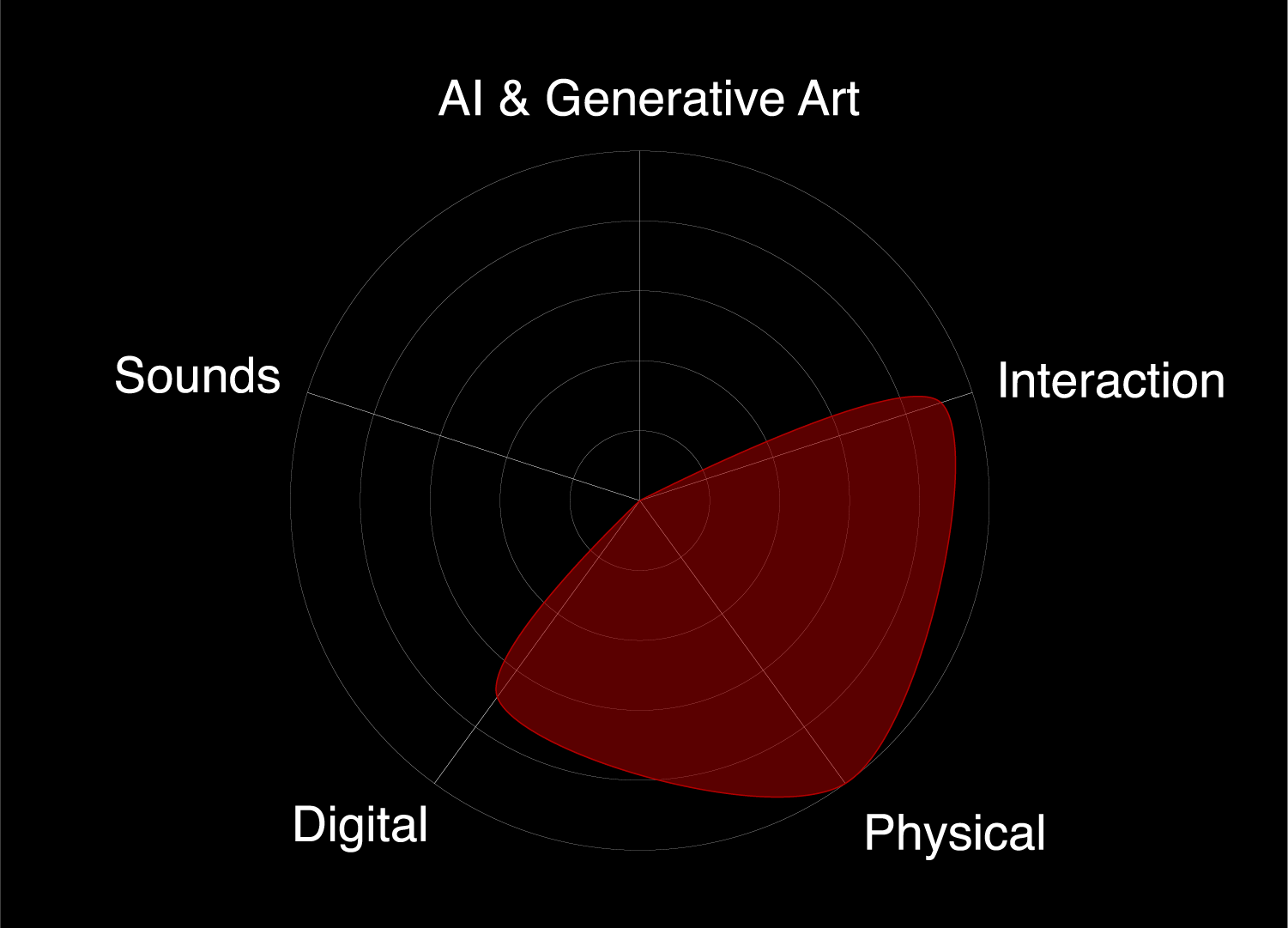The Challenges of Women in Entrepreneurship
By: Daniel Iván Jiménez, Anning Song, Peiyu Shen, Wentai HuangThis project aims to highlight challenges faced by women in various industries across Eastern Europe and Western Asia. We've utilized data from the United Nations Women (UN Women) to create a data visualization with two main interpretations:
· Firstly, by analyzing each industry separately, the visualization presents a single color of triangles spread across a mesh, with different challenges visible within each industry (Outcome #1).
· Secondly, by analyzing all industries together, we can focus on a specific challenge, such as accessing financing, and use different colored triangles to see which industries are most affected by it (Outcome #2).
OUTCOME #1

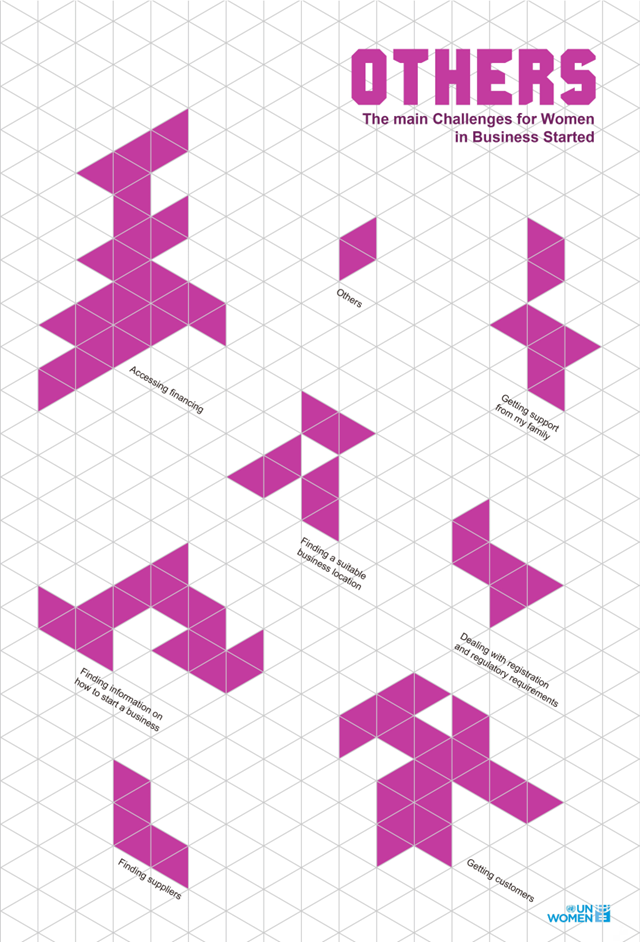


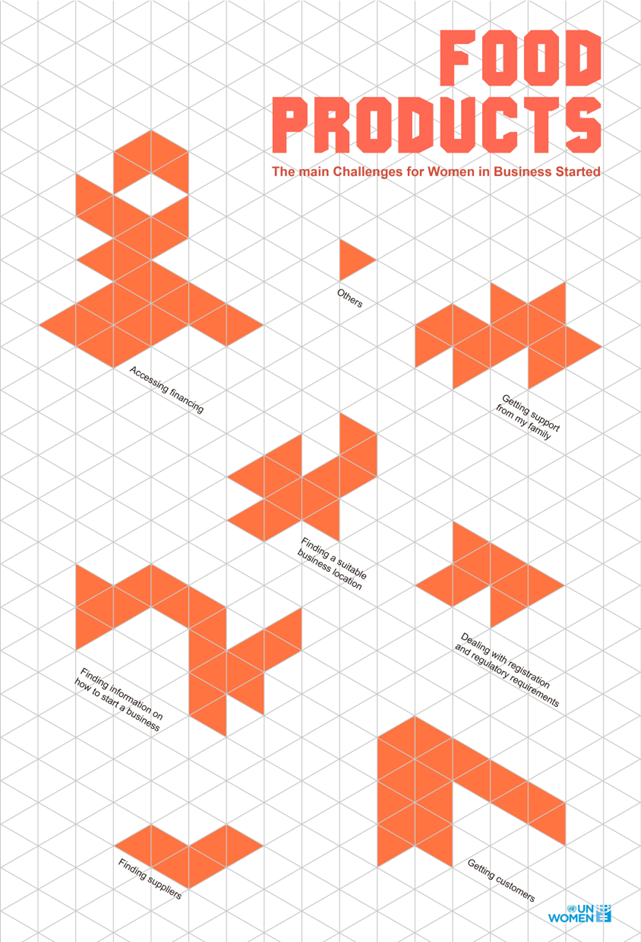

OUTCOME #2



FINAL OUTCOME
Our main idea was to create a physical representation of the data that allows the audience to recognize and interact with it.
Our outcome consists of a 3D triangle mesh and titles with color-coded triangles representing each industry.



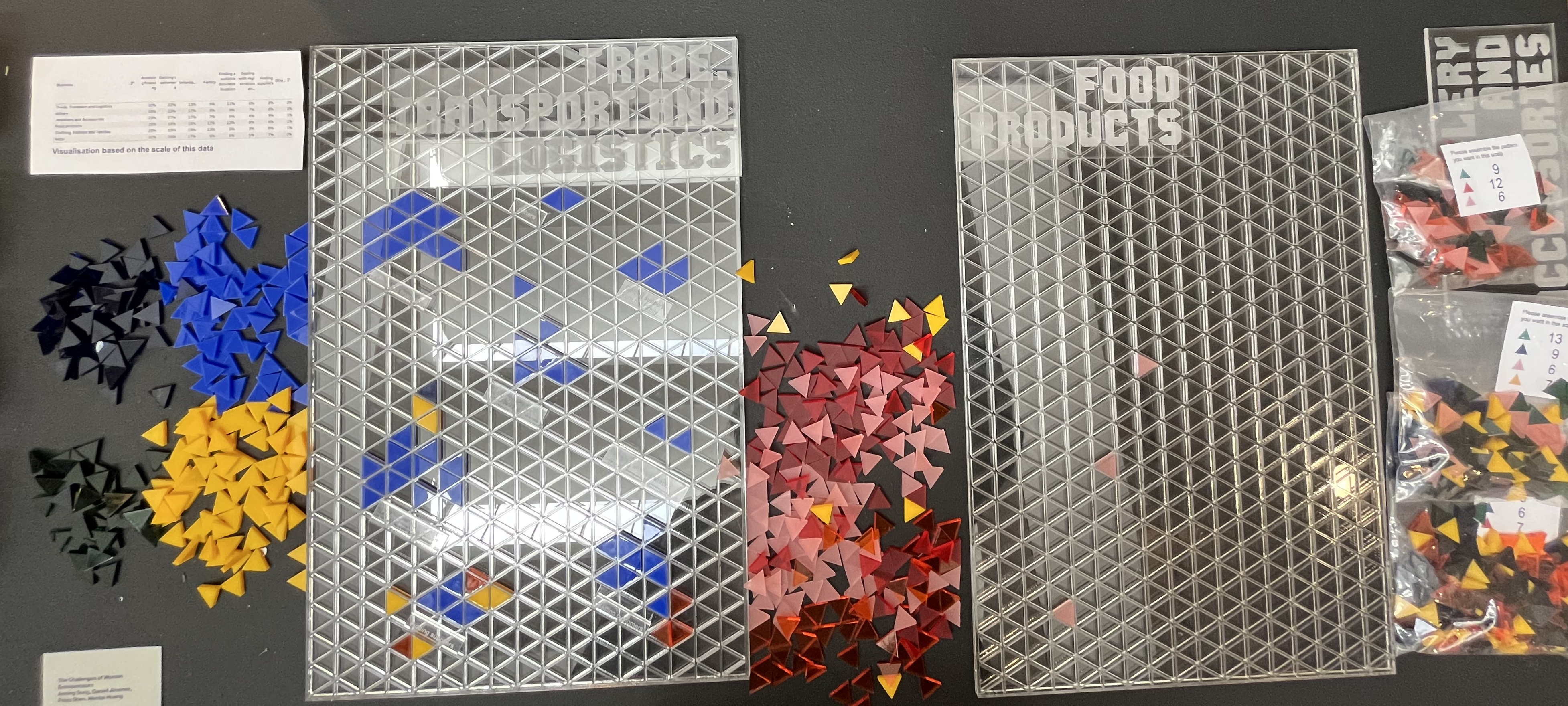
VISUAL LANGUAGE
This project utilizes two main data representation methods: triangles and colors. Triangles represent the standardized proportion of women facing a particular problem in each industry. Colors differentiate triangles from different industries.


DATA COLLECTION
The data used was provided by UN Women and collected during the Women's Entrepreneurship EXPO 2022.
The data used was provided by UN Women and collected during the Women's Entrepreneurship EXPO 2022.
DATA PROCESSING
![]()
The remaining process was carried out in Adobe Illustrator.
The remaining process was carried out in Adobe Illustrator.
DESIGN PROCESS
Our design process drew inspiration from embroidery patterns in Eastern Europe and West Asia. We individually developed different ways of visualizing the data and shared these sketches within the group. This collaborative approach allowed us to create a final outcome that incorporated the strongest points from each proposal.
![]()
![]()
![]()
![]()
![]()
Our design process drew inspiration from embroidery patterns in Eastern Europe and West Asia. We individually developed different ways of visualizing the data and shared these sketches within the group. This collaborative approach allowed us to create a final outcome that incorporated the strongest points from each proposal.

